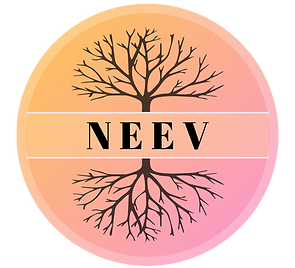Peaceful Protests–The Marriage between the Government and the People
- deva
- Feb 20, 2021
- 3 min read
Ever since I was a child, my social sciences have taught me that democracy is the best form of government invented so far because it is the only form of government that is by the people, for the people and of the people. But who constitutes 'the people' in a democracy? People of the government? Only men? If so, who gets to decide who is a man? Is it the government? Why is it only men? Why not women too? Should men and women have equal say in who gets to be in power? What about children? Should a child's opinion matter in choosing our leader? If not, who decides who is not a child? What about criminals? Black people?

Humanity's quest to answer this question has led to several milestones in history that include, but are not restricted to, freedom of speech, gender equality, minority rights, the founding of the United Nations, peace, and exchange of culture.
Yet, humanity at large isn't satisfied with who gets to be in the pool of 'people'.
I still remember my social science teacher, who wasn't a devout Gandhian but supported the idea of non-violence and said that protests are the very foundation of a democracy, for it is the only way the people's voices can be heard. The marriage between the government of a state and its citizens is built on the fact that if the people are unhappy, they have the means to express their opinions and be heard. To protest against the government with a proper agenda is the key to a healthy relationship between the people and the government.
Yet, people aren't comfortable protesting- even if they wish their voices be heard.
Especially people who menstruate.

The next paragraph describes a violent incident against a menstruating individual. Reader discretion is advised.
"I was at the JNU protests when a policeman asked me if my parents know that I am protesting," says Ishita Bagchi, the founder of Project Red Dots. "My female friends and I have experienced terrible stigma when we were at the protest site. We were peacefully protesting outside a government body, demanding that our voices be heard. One of my friends was protesting with us when she wanted to use the washroom. She was menstruating at the time and was also feeling tired. I approach a policeman, who rejects my request of letting my friend use the washroom that was a stone's throw away." Ishita recalls, her voice breaking at times. "The second time, I try requesting a female police officer, and this time she stalls us by asking questions for about an hour. At 7 pm, she accepts our request, but a few moments after, the streetlights go off, and the next thing I know is that the police are charging at us with sticks in their hands (lathi-charge). I was injured, but I was also lost. My friends were nowhere to be seen, I couldn't focus on anything. After the lathi-charge is done, and we are dispersed, I find my friend who is heavily wounded, and is bleeding all over. We take her to a nearby hospital, where she was treated, and we head home."
When a basic necessity as going to the washroom during a protest isn't provided to the people, one can only assume that their voices are suppressed. These inhumane acts damage the relationship between the people and the government, with the people feeling insecure and traumatized.
The lessons in my social science book were filled with examples of non-violent protests against the colonial rule of the British Empire. An incident I'd most often come across is nicknamed 'the salt march'. Mahatma Gandhi walked from Gandhinagar to Dandi to extract salt on his own, which was illegal at the time. This simple non-violent movement led to the removal of the salt tax. Though this took place in a year, it must be noted that they were able to make a difference during colonial rule.

Indian kids have been brought up with stories of the Mahatma, on his non-cooperation and civil disobedience movements. The peaceful and non-violent protests held on a massive scale has inspired a lot of people to follow the principles of satyagraha, the most notable one being Nelson Mandela. As a child, I was fascinated by the idea that people of a country as diverse as India were brought together and taught to protest without the use of violence. Indians of all religion, sex, and gender took part in these protests protecting their children from the imperial oppression and discrimination that was the British empire. After we received our independence, the founders acknowledged the fact that the constitution they developed may be flawed, and people are encouraged to peacefully protest against it.
Yet, the stigma about females who protest grows rapidly like a weed on an ill-maintained farm.
I imagine Gandhi would be disappointed.
_edited.png)



Comments